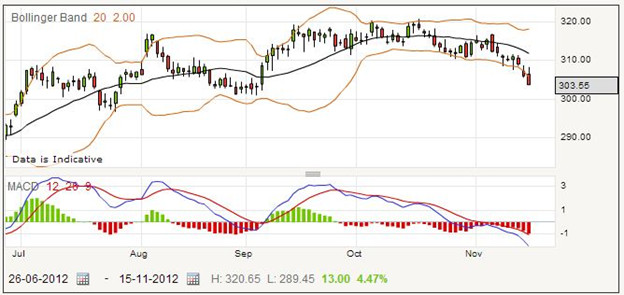The Foreign & Colonial Investment Trust is, as the name suggests, a company of long-standing. The name dates back to 1891, but the company was established in 1868 as The Foreign & Colonial Government Trust, and its performance has proved excellent for investors and for spread betting.

This daily price chart shows a gradual uptrend punctuated by many tradable retracements. Currently it is undergoing a downtrend and possible breakdown, but in the long run progress has been steady. The price was hit by the global economic crisis, but the current value is almost as high as it was at its peak in 2007 prior to the depression.
The Trust was the first ever investment trust in the world, and it is now one of the largest in the UK. Its founder was Philip Rose, who also founded the Royal Brompton Hospital. The trust invests in an international portfolio of shares, and offers significant diversification with a selection of about 600 different companies.
When it started, it specialized in investing in government bonds, and it wasn’t until 1925, well after the change of name, that it started to invest in equities. It now handles assets of about £2½ billion.
Looking at the chart, it is interesting to see the amount of volatility in both the price and the MACD indicator. This indicates that it will be a challenge to trade profitably, but also that the rewards are there if you can develop an effective trading plan. The Bollinger Bands show frequent narrowing and widening, reflecting the variable nature of the price. Note that is quite normal for the price to move strongly in one direction or another after being constrained by the narrowing of the bands, and this suggests that the current possible breakdown, which is yet to be proven, may develop further.
Foreign and Colonial Investment Trust Rolling Daily: How to Spread Bet on Foreign and Colonial Investment Trust Shares?
The current spread betting quotation on these shares is 303.44 – 304.96 for a daily rolling bet. Suppose that you believe the indicated downtrend will come to pass, then you may be tempted to place a sell bet, taking a short position at 303.44 for £6.50 per point. You should note that you would normally require some further signs for confirmation before taking a trading position.
Imagine that the price falls down to 253.67 – 255.15. You have a winning bet, and if you choose to take your profit now the trade would close at 255.15. That means you have gained the number of points from 303.44 to 255.15, which works out to 48.29 points. Multiplying by £6.50, you can work out your winnings to be £313.88.
Taking the alternative view, for a losing bet, you might choose to close the trade and accept your losses if the price went up to 342.13 – 343.65. From the starting price of 303.44, your bet has gone up to 343.65, a difference of 40.21 points. With your stake of £6.50 per point, this gives you a loss of £261.37.
It is common practice with many traders to use stop loss orders to try and stop losing bets running away from them. The great advantage is that a stop loss order will cause the bet to be closed at a certain level of loss, whether or not you are aware of the price or even watching the markets. If you had used a stop loss order on this trade, then you might have found that the losing position would be closed earlier, at say 331.26 – 332.74. 332.74 minus 303.44 is 29.30 points that you lost using a stop loss order, so multiplying this by your stake of £6.50 per point your total loss works out to £190.45 this time.
Foreign and Colonial Investment Trust Quarterly Futures Bet
Instead of taking a daily rolling bet, you may choose to place a futures based bet if your trading perspective is a few weeks or months away. The current price for the far quarter futures bet on Foreign & Colonial is 304.13 – 307.80. Suppose for the sake of example that you believe the price will go up, and you place a bet for £7 per point at the buying price of 307.80.
Firstly, assume the price goes up as you wish, and that in a few weeks you are able to close your bet for a profit, when the spread betting quotation is 346.72 – 349.85. As it is a long bet, it closes at the lower price of 346.72. That means you have made 346.72 minus 307.80 points on the bet, working out to 38.92 points. Multiplying by your bet of £7 per point you find you have won £272.44.
However, if you have been involved in the trading market for any time you know that you must expect a share of losses, as no one can predict the markets with accuracy. So for this stock as a second example assume that the price fell after you placed your spread bet, and you chose to cut your losses when it reached 278.21 – 281.49. You closed your losing trade at 278.21. Taking 278.21 away from 307.80, you would have lost 29.59 points. For your chosen size of stake this amounts to £207.13.
Many spread traders choose to use a stop loss order, which is normally placed when you open the bet and which makes your spread betting provider close a losing trade automatically without you intervening further. With a stop loss order, this losing trade might have closed earlier, at 286.89 – 289.95. With a closing price of 286.89, the point difference now is 20.91, so your loss works out to £146.37.